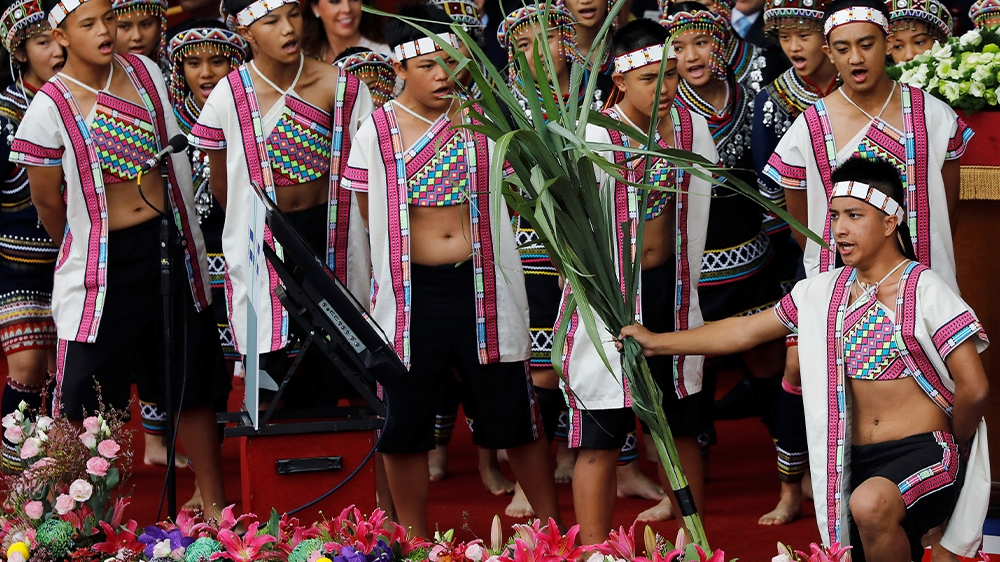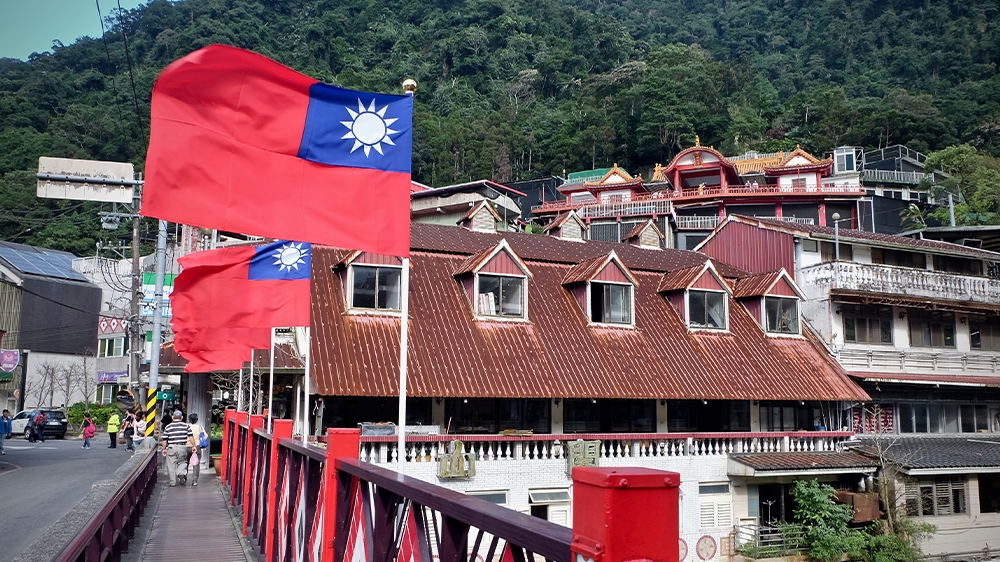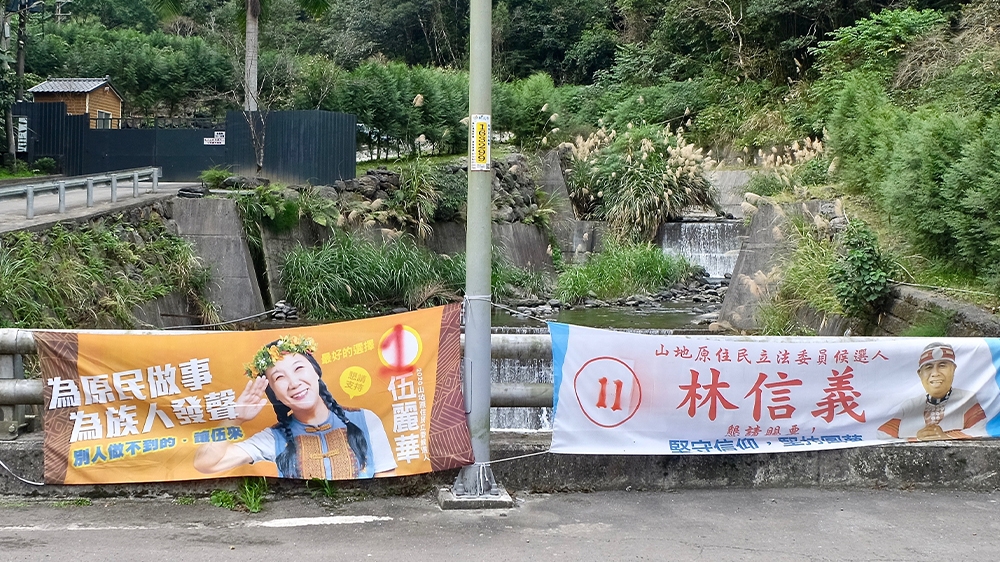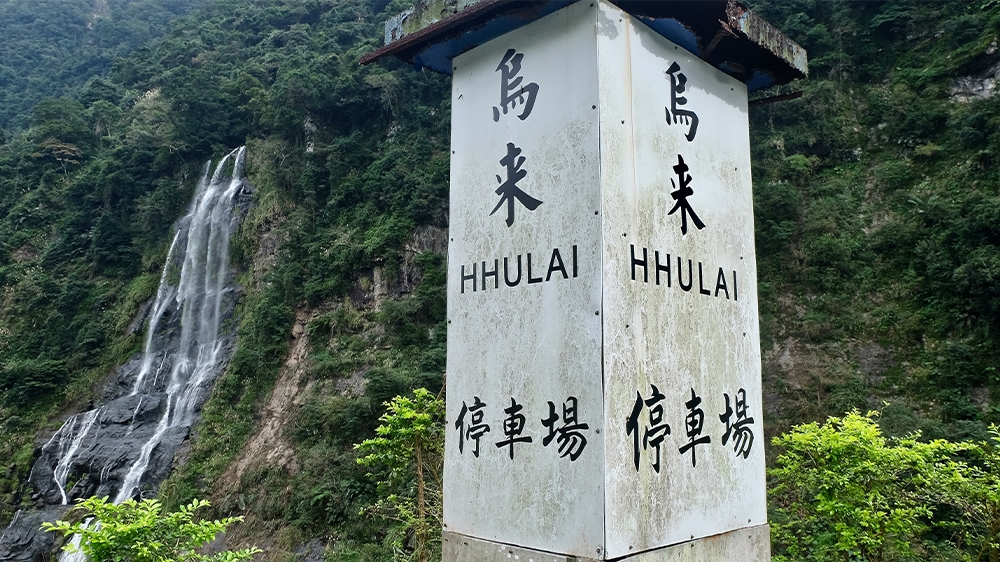‘Always campaign time’: Why Taiwan’s indigenous people back KMT
Deeply entrenched community service centres give opposition KMT edge in indigenous communities in Saturday elections.

Wulai Rahou, Taiwan – In Wulai Rahou, a small community 90 minutes’ drive outside Taiwan‘s capital, the campaign for Saturday’s election is in full swing and banners advertising half a dozen different candidates dot the hilly road.
Many of the candidates are dressed in the colourful clothing associated with the island’s 16 recognised Austronesian-speaking indigenous groups.
Keep reading
list of 4 itemsKey takeaways as ex-Trump lawyer Michael Cohen testifies in New York trial
Will Israel’s war on Gaza sway South Africa’s election?
Lithuania’s Nauseda wins first round of presidential election
But while support for incumbent President Tsai Ing-wen of the Democratic Progress Party (DPP) is growing – she, herself, is part indigenous – village mayor, Yawi Aban, a member of the Atayal people, says many residents continue to lean towards the Kuomintang (KMT) and her rival in the same party, Han Kuo-yu.
“In this area, I believe it will go 50-50 and that means Tsai’s vote has increased,” he told Al Jazeera. “Only for Atayal people I think, Han and KMT will get more votes because there are more older people in the community. It will go 60-40 or even 70-30.”
Even as Tsai is tipped to win the election, the KMT has deep roots in Wulai Rahou where the party has long been considered synonymous with the government thanks to decades of one-party rule that only ended in the 1990s.
“In the past and even now, older people – the majority of them [over 40] – support the KMT because the KMT ruled Taiwan for a long time,” Yawi said. “In the past, the indigenous community was more like a closed [system]. It didn’t really have outside resources so they pretty much listened to what the KMT told them.”
‘Iron vote’
Taiwan’s indigenous people – about 2 percent of the population – have long been considered an “iron vote” for the KMT and that is expected to continue despite Tsai’s efforts to improve indigenous people’s lives and atone for past injustices.

Shortly after her election in 2016, Tsai became the first president of Taiwan to apologise to indigenous people for crimes committed against them since the island was first colonised 400 years ago.
Tsai also established the Presidential Office Indigenous Historical Justice and Transitional Justice Committee to promote indigenous culture and boost livelihoods, earning her much praise overseas but less so at home.
The KMT, which established itself on the island after the former colonial power Japan was defeated in World War II and the Communists won China‘s civil war, nearly wiped out many indigenous languages and customs during 40 years of martial law, but since Taiwan’s transition to democracy in the 1990s, the DPP has struggled to make inroads.
That is because as the KMT attempted to “modernise” Taiwan’s indigenous groups – a policy that began under the Japanese – the party was able to develop deep roots in many communities that have persisted into the democratic era.
The cornerstone of the party’s popularity is hundreds of service centres – known as “fuwuzhan” – which were started decades ago to provide rice, oil and matches to indigenous people and today remain deeply entrenched in many communities, according to Scott Simon, a professor and co-chair in Taiwan Studies at the University of Ottawa’s Department of Sociology and Anthropology.

“It’s always campaign time in indigenous villages and with the ‘fuwuzhan‘, the local people can go to them when they have a problem to resolve. They are very good at solving problems and showing that they care about that problem,” he said.
Past KMT leaders are still fondly remembered in many communities for building bridges and roads – something that is more important for many indigenous than political statements from Taipei, Simon said.
Kulas Umo, an Amis nation student activist based in Hualien on Taiwan’s east coast, said for young indigenous people and students interested in political issues, particularly in rural areas, the KMT is often the only path forward.
“Almost all the political figures in the indigenous communities are KMT,” he said.
“They take control of resources. If you want to work in the government or study, or get any resources … you have to be a member of the KMT.”
DPP battle
KMT’s resources are difficult to beat, according to Bawtu Payen, a member of the Atayal people who works for the DPP’s campaign in New Taipei City. While the KMT has been a dominating political force in Taiwan since the 1940s, the DPP only became a legal political party in 1987.
Presidential incumbent Tsai, meanwhile, is only the second non-KMT leader in the post-war era.
“The DPP is still fighting to maintain their party’s power in mainstream society, so for them, the indigenous vote is less of a priority. It’s improving but it needs a lot more work,” Bawtu told Al Jazeera.
Since 2008, the DPP has begun to establish its own indigenous service stations but they still number only 64 compared with the 383 KMT “fuwuzhan” across Taiwan, according to government figures.

Younger indigenous voters, however, are beginning to break the mould.
Taiwan’s generation of voters born towards the end of or after marital law are “natural-born” supporters of Taiwanese independence and have a unique identity from China – whose Communist Party claims sovereignty over Taiwan – that is championed by many members of of the DPP, said Bawtu.
That trend extends to young indigenous people who are better educated and have greater access to information than previous generations. With nearly half of indigenous people living in urban areas, many may soon no longer have the need for the “fuwuzhan” or feel it is important to align with any single party.
But before things can change dramatically for Taiwan’s indigenous communities, said Jolan Hsieh, Director of the Center for International Indigenous Affairs at National Dong Hwa University and member of the Siraya people, their political representation must first change.
Questions over representation
Since the 1970s, indigenous people have had reserved seats set aside for them in parliament – an arrangement that has continued into the democratic era.
On Saturday, indigenous people will be able to vote for the president and a “party list” – MPs chosen based on the share of votes their party receives – like everyone else in Taiwan. But unlike the rest of the population, they will not get to vote for their district representatives.
Instead, they will either vote for three “mountain” representatives or three “plains” representatives depending on the classification of their indigenous group.
“While it looks like a protection, it can also be problematic, especially when more than 50 percent of indigenous (people) live in urban areas,” Hsieh said.

She said the voting system also pigeon-holes many politicians into a role of “indigenous representative” because they are not allowed to run as a district representative.
The KMT and DPP are each only running one indigenous candidate on their proportional party lists, with the DPP’s Omi Wilang, an Atayal Presbyterian pastor, likely to win one of the 34 “party list” seats.
Kolas Yotaka, a former DPP legislator and the current spokeswoman for the government’s executive branch said during her tenure as an MP-at-large she attempted to reform Taiwan’s voting system to resemble New Zealand’s, where indigenous Maori can run for reserved Maori seats or regular ones.
While the bill failed, she said Taiwan needs to look to less segregating models to improve indigenous representation.
“When the majority or even half the indigenous population are living in the cities they should have the right to run in cities and not only for indigenous seats,:” Kolas said. “Then we can open more doors for indigenous people all over the island to have someone else to speak for them.”